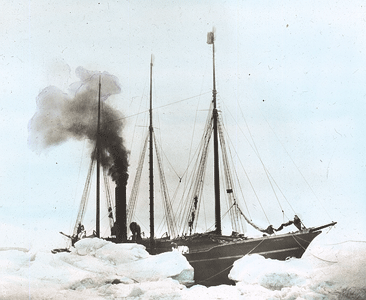1906- Onto the Roosevelt
“Three hours of the next march put us on the ice-foot north of Cape Union and as we stepped upon it Ootah exclaimed “Tigerahshua keesha, koyonni!” (I freely translated, “We have arrived at last, thank God!") Ahngoddoblaho who was very lame remained behind in the camp and Clark, who was making rather heavy weather of it, fell rapidly behind from the very first, but I told him to work along as best he could and take it easy, that as soon as I reached the ship I should send someone back to him with something to eat. I think I shall never forget the march from there to the Roosevelt. At risk of being regarded as imaginative I may say that it actually seemed to us as if we had arrived in God’s country once more. It was a perfect night, clear and calm, the sunlight softly brilliant and the rich warm colours of the cliffs offering to our eyes a very decided contrast to the savage pinnacles of the sea ice and the snow-covered Greenland coast... From where we landed the hard level ice-foot presented the best of walking, and we made good time to Cape Rawson. As we rounded it the slender spars of the Roosevelt looked very, very beautiful in the yellow midnight May sunlight… [I went to my room on board the Roosevelt] where I quickly ripped my rank fur clothing from myself, and threw it out on the quarter-deck; then to my bath. After that, my dinner, a real dinner with real food such as civilised men eat; and then to my blankets and to sleep, unmindful of the morrow.”- Robert E. Peary in Nearest the Pole, published in 1907
"S.S. Roosevelt in ice pack" by Donald B. MacMillan, 1909, Peary-MacMillan Arctic Museum Collections

